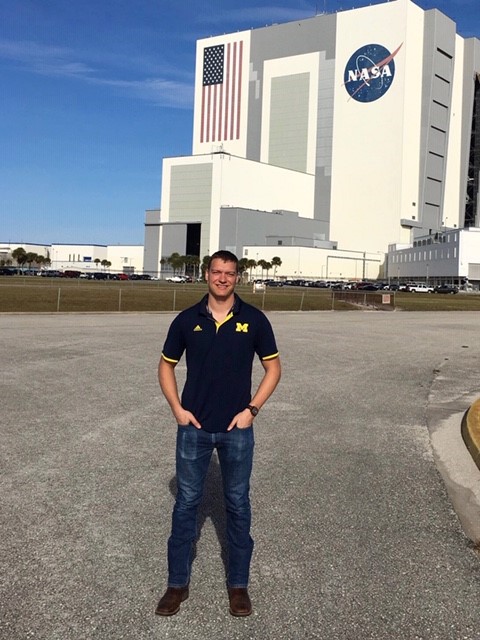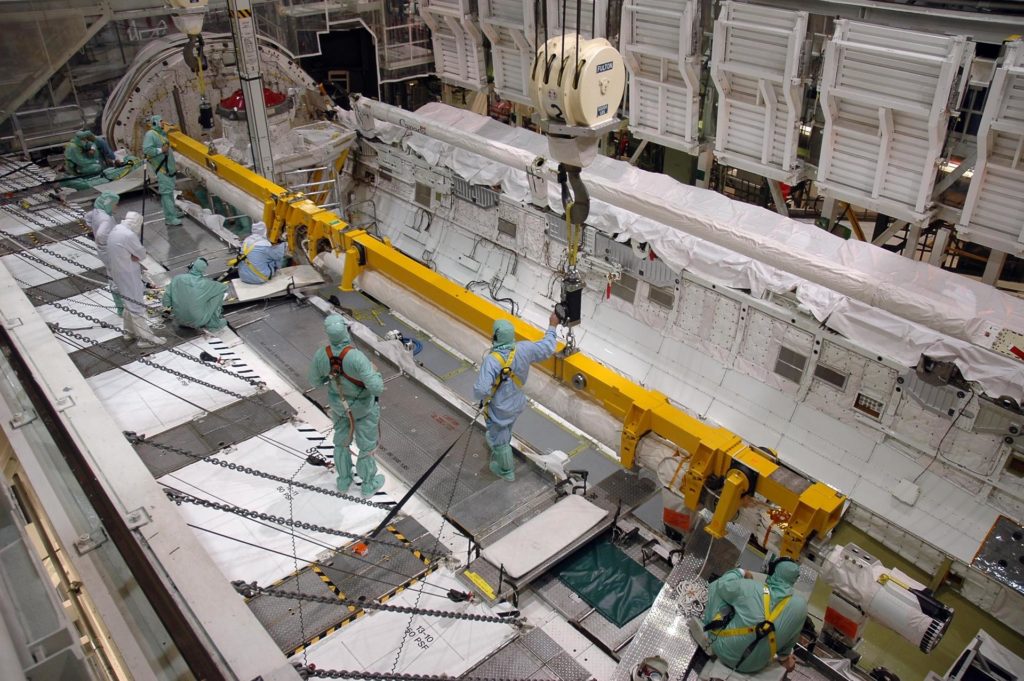
#Kennedy orbiter processing facility ken tenbusch install#
Then, they install a large cone on the tail of the orbiter, which helps smooth the airflow around it during the ferry flight. Technicians power the orbiter down, safe all the hypergolic propellants and fuel systems, drain the water systems and close the nose and landing gear doors. The way orbiters are processed is different, too.Īt Dryden, crews basically have to winterize the vehicle before it's bolted to a 747 jumbo jet called the Shuttle Carrier Aircraft. The wind comes right off of the mountains and if it rains, you're getting rained on." "Over here, you are completely open to the environment. "Processing outdoors offers many challenges," Tenbusch said. But at Dryden, Endeavour is processed outdoors at the Mate-Demate Device with limited resources.

Within hours of landing at Kennedy, Endeavour would have been towed into one of the center's orbiter processing facilities - a place where technicians have all of the resources they need right at their fingertips. One of the major differences in processing at NASA's Kennedy Space Center in Florida and NASA's Dryden Flight Research Center in California is location. "Not easy when your teeth are chattering." "It's 32 degrees out here," said Ken Tenbusch, Endeavour flow director. In fact, in California's Mojave Desert where NASA and contractor employees are processing space shuttle Endeavour, it's freezing. Photo credit: NASAĭon't let the desert fool you. Photo credit: NASA/Tony LandisĮndeavour atop the carrier aircraft lifts off from Edwards Air Force Base on the first leg of its ferry flight back to Kennedy. Photo credit: NASA/Carla ThomasĮndeavour was lifted off the ground and placed atop a modified Boeing 747 carrier aircraft for the piggyback ride back to Kennedy. NASA technicians position an aerodynamic tailcone around the engine nozzles of Endeavour in preparation for its ferry flight. The OPF is one of the most sophisticated and complex aircraft maintenance hangars in the world, capable of accommodating two shuttle orbiters simultaneously within the facility's 29,000 square-foot hangar bay.Endeavour is nestled in the Mate-DeMate Device as preparations are under way for its ferry flight. What is Kennedy’s Orbiter Processing Facility? Are shuttle cars capitalized?Ĭurrent NASA Portal style is that space shuttle is lowercase on its own, but capitalized before the name of an orbiter. The Solid Rocket Boosters (SRBs) operate in parallel with the main engines for the first two minutes of flight to provide the additional thrust needed for the Orbiter to escape the gravitational pull of the Earth. International Space Station is capitalized, but shorter forms, Space Station or Station, are not. He will fly on the Space Shuttle Atlantis. Do you capitalize space shuttle?Ĭurrent NASA Portal style is that space shuttle is lowercase on its own, but capitalized before the name of an orbiter. … In 1993, he joined the NASA test directors, conducting various operations from the Launch Control Center control rooms at Kennedy. (SNC) for the agency's Commercial Crew Integrated Capability (CCiCap) initiative. Ken Tenbusch is the NASA deputy partner manager working with Sierra Nevada Corp. … This document is a way for all key production engineers and operators to be on the same page, primarily in regard to cues, transitions VOG's, stingers, and video and graphics playback. Show flow is essentially a document of all the details and the timeline of your event to make sure everyone is on the same page.

And then you basically a processing flow, from start to finish from that landing all they way on through to launch.

Ken Tenbush: Shuttle flow is taking that vehicle from the time that it has landed. Hosted by Damon Talley of NASA's Digital Learning Network, the webcast takes you behind the scenes at Kennedy Space Center in Florida and includes an interview with Flow Director Ken Tenbusch, who oversees the critical work to prepare shuttle Endeavour for flight.


 0 kommentar(er)
0 kommentar(er)
